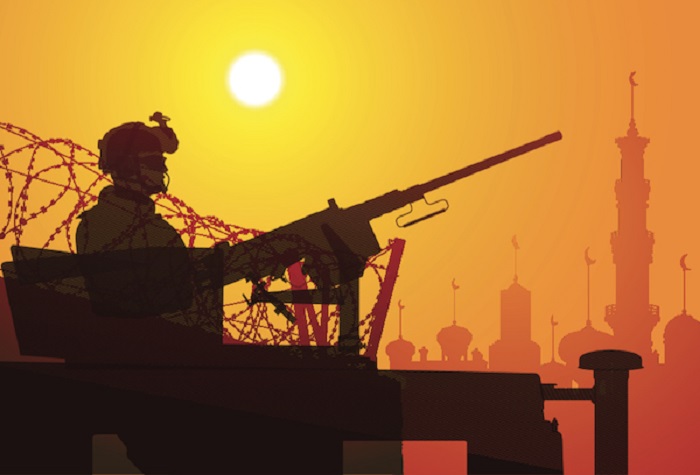Alwaght- The US military presence across the world, and most importantly in West Asian region, is an outcome of developments that take place in specific regions. The conflicts urged Washington to send forces for limited campaigns or long-term presence which motivated constructing military bases. The experts believe that the conflicts and generally the factors that demanded US presence in different regions can be broken into both natural and artificial crises. Each of them contributed to the American motives and excuses for sending military forces to wage wars and so protect interests.
Natural crises
To know about the natural origins of the US presence in West Asia region we must consider the conflicts among different identities in the region that appeared after the First World War and the collapse of the Ottoman Empire. In fact, decline of Ottoman Empire and subsequently signing the Sykes-Picot Agreement gave rise to new structures in West Asia that were based on racial and identity differences. The fact is that new Muslim states were formed within borders of former Ottoman Empire in best interests of the Western powers that won the First World War, particularly Britain and France.
At that period, the demands of the relevant sides that hand hands in designing the new West Asia map did not rely on agreement but on putting down the opponents of Western-sponsored plans. This issue had created secret layers of discord and division inside the borders of the region. These tense layers, in turn, caused a period of chaos and conflicts in the region in the closing years of the 20th century– the First Persian Gulf War in 1990– and in the second decade of the 21st century–the events after 2010. These unstable conditions have pushed the political leaders of regional countries, majorly Arab rulers, to urge the US to intervene in the crises. In other words, they provided a natural ground for the US military presence and building military bases in the regional countries according to bilateral agreements.
Artificial crises
But concerning the artificial backgrounds for the presence of the US in West Asia we must refer to the role of Washington itself and its Western allies in preparing the ground for military stepping in the region. Over the years following the Second World War, the US has used the strategy of creating continuous crises to justify its presence in different regions of the world. To put it another way, as long as the crises are persistently existing across the world, the US can pick the choice of military campaigns and constructing military bases in different regions, especially in West Asia.
To prove the claim that the ongoing crises are actually a product of Washington to guarantee its military intervention in West Asia and other areas of the world, we can refer to the book The Shock Doctrine: The Rise of Disaster Capitalism by Naomi Klein. The key argument of Klein in her precious book is that crisis making in West Asia in general and Middle East in particular through war, terrorism, peace negotiations, fighting development of weapons of mass destruction (WMDs) and others are in fact the leading US instruments for keeping the domination over regions and for keeping in place its global hegemony. Existence of persistent crises raises a need for the US presence as the savior of humanity and democracy– as the Americans brand themselves. The US moves including mediations, invasions, creating balance between the warring sides, arms sales, and building military bases in West Asian countries all are examples of Washington's role playing in the constant crises in West Asia and the Middle East. In general, the global capitalism led by the US first moves to fan comprehensive tensions including wars, and then in second step the economic and military corporates amid chaos and crisis undertake the task of making changes and finding grounds for influence. At the end of the road, the opponents of the US-directed changes that are meant to expand capitalism will be put down under the excuses of fighting terrorists and reactionary forces.
All in all, it can be noted that the two cases of historical and identity-related tensions in West Asia after Sykes-Picot Agreement in 1916 and forging crises in different areas across the world, particularly Middle East, by the US are the two key grounds that urge establishment of US military base in West Asia and especially in the vicinity around Iran as a leading anti-capitalism side in the region.



























